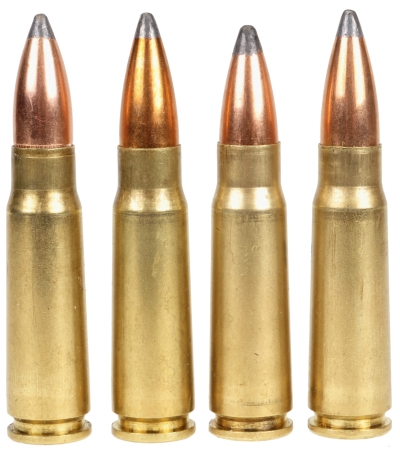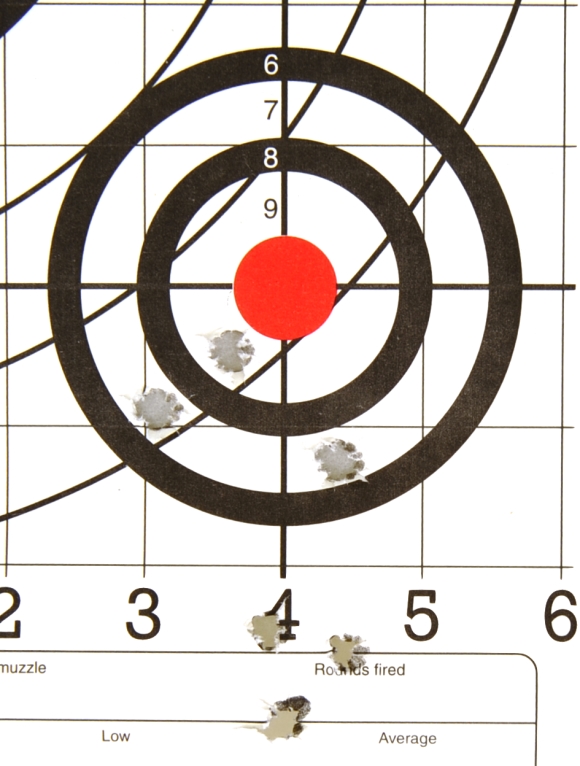Prologue
04/24/2022 – From my perspective, this project was enjoyable. Handloading is one of those aspects of firearm ownership that appears to hold more narrow of an appeal with each passing year. I guess this is because of how our interests in firearms are so varied; hunting, competitive shooting, self defense, etc. where the purpose, not the firearm, drives peripheral interests and handloading may not offer a sufficient return on effort..
Where the firearm is the center of interest, it is only natural to want to bring in peripheral activities that build better understanding and appreciation. There is a sense of pride when a firearm is the product of precision machine operation, precise assembly and exemplary fit and finish. An understanding of ballistics and ammunition assembled for optimal performance only adds to the sense of achievement.
So the motivation behind this project was no more than curiosity. I’ve read so many times how 7.62×39 subsonic ammunition, particularly with heavier bullets, is inaccurate, or bullets tumble, or twist rates are too lazy, or… But the patterns of delivery of this type of information often render the information… dubious and, often, people concur and repeat without challenging sources.
This little project was initially thought to be a one week effort, but turned out to take six weeks. At the conclusion, the results were satisfactory and the work was enjoyable.
Conclusions
This is as far as I am taking the effort to get accurate subsonic 7.62×39 handloads, as this level suits my purposes and both velocity and accuracy proved reliable consistent. Additionally, the supersonic loads, at least up through 150 grains, proved sufficient for hunting deer size game.
How silent were the subsonic loads with silencer in place? Quiet. At least quiet enough to reduce report to a level that does not require ear protection, allows eye open shooting to observe hits and renders muzzle blast down to a an elevated “pssst”.
By the same token, even the supersonic rounds were mild with a silencer in place. Certainly to the extent shooting eyes open was easy, muzzle blast and report were moderate. Ear protection advisable to ward off the effects of mini sonic booms.
Handload Data
Warning: Bullet selections are specific, and loads are not valid with substitutions of different bullets of the same weight. Variations in bullet length will alter net case capacity, pressure and velocity. Primer selection is specific and primer types are not interchangeable. These are maximum loads in my firearms and may be excessive in others. All loads should be reduced by 5% as a starting point for development where cartridges have greater than 40 grains in capacity and 10% for cartridges with less than 40 grain capacity following safe handloading practices as represented in established mainstream reloading manuals. Presentation of these loads does not constitute a solicitation for their use, nor a recommendation.
| 7.62×39 |
|
| Firearm | Ruger American Ranch |
| Barrel Length | 16.12″ |
| Max Case Length | 1.528″ +0.000″/-0.015″ |
| Min – Max COL | 2.150″ – 2.200″ |
| Primer | CCI 200(LR) |
| Bullet Diameter | 0.3110″ +0.000″/-0.0020″ |
| Reloading Dies | Lee Precision |
| Bullet Type | Bullet Weight Grains |
Net H2O Grains Capacity |
COL” | Powder Type | Powder Charge Grains |
Muzzle Velocity fps |
3 Shot 100 YD Group ” |
| Hornady Interlock 3140 |
123 | 31.7 | 2.200 | Hodgdon Trail Boss | 7.1 | 1097 | 1.1 |
| Hornady Interlock 3140 |
123 | 31.7 | 2.200 | CFE BLK | 29.5 | 2465 | 1.0 |
| Sierra Pro-Hunter 2305 |
125 | 31.0 | 2.200 | Hodgdon Trail Boss | 7.1 | 1084 | 0.5 |
| Sierra Pro-Hunter 2305 |
125 | 31.0 | 2.200 | CFE BLK | 29.0 | 2434 | 1.2 |
| Speer Hot-Cor 2217 |
150 | 28.9 | 2.200 | IMR 4227 | 11.1 | 1040 | 1.3 |
| Speer Hot-Cor 2217 |
150 | 28.9 | 2.200 | CFE BLK |
28.0 | 2116 | 0.7 |
| Sierra Pro-Hunter 2310 |
180 | 25.6 | 2.200 | IMR 4227 | 13.3 | 1092 | 1.2 |
| Sierra Pro-Hunter 2310 | 180 | 25.6 | 2.200 | CFE BLK |
25.0 | 1883 | 0.8 |

SAAMI MAP for the 7.62×39 is a modest 45,000 psi. Both 150 and 180 grain supersonic load pressures were increased by approximately 15%. or 52,000 psi to take advantage of the bolt action’s strength. The increase in velocity over standard pressure levels was meaningful.
Safety of increased charges? I think that is a personal assessment. The basis for my decision to increase pressure above standard is that the same Ruger American action is chambered for cartridges such as the 300 PRC, and others, with MAP levels approaching 65,000 psi.There were no flattened primers, cracked cases, casehead separation, excessive case stretch, sticky extraction, etc.
In the round of testing just prior to this, Alliant AR-Comp powder was used for 150 grain and 180 grain loads. However, the use of AR-Comp resulted in compressed loads and I ran out of case capacity before the loads topped out, so the loads were converted to CFE BLK.
Results

Above, 125 grain Sierra 100 yard groups. Lower is subsonic, upper is supersonic. Subsonic consistently shot 1.5″ – 2″ lower than supersonic and, in this case, shot tighter than the supersonic.. I would take either hunting.
A slice of humble pie


Why I never allow myself to look down at factory ammo. I shot three rounds from a cold gun while checking scope settings with PPU brass case, Boxer primed, 123 grain SP ammo. While supersonic, the group tied for the best of all. I cranked the scope up and shot three rounds of Hornady 123 grain subsonic, upper group pictured above.
Not enough that the cheap ammo factory round shot so well, the same ammo produced a 0.6″ three shot group from a Ruger Mini Thirty. My theory is that the blunt round nose and short bullet length increase stability. Sure. Why not?
How do they fly?
| Best Zero – 150 Grain Speer Supersonic | |||||||
| Near-Zero – yds. | 19 | Mid Range – yds. | 101 | ||||
| Far-Zero – yds. | 179 | Max Ordinate – in. | +3.0 | ||||
| Point Blank – yds. | 191 | ||||||
| Best Zero : Range 0 – 200 yards | ||||||||||||
| Yards | 0 | 50 | 100 | 150 | 200 | |||||||
| Velocity – fps | 2116 | 2022 | 1930 | 1841 | 1754 | |||||||
| Energy – ft.-lbs. | 1491 | 1361 | 1240 | 1128 | 1025 | |||||||
| Momentum – lbs-sec | 45 | 43 | 41 | 39 | 38 | |||||||
| Path – in. | -1.50 | 1.81 | 3.00 | 1.85 | -1.87 | |||||||
| Drift – in. | 0.00 | 0.00 | 0.00 | 0.00 | 0.00 | |||||||
| Time Of Flight – sec. | 0.00 | 0.07 | 0.15 | 0.23 | 0.31 | |||||||
With a +3″ ordinate, the supersonic 150 grain load is enough for deer out to 200 yards. Point blank to 191 yards certainly makes it flat shooting enough.
| Best Zero – 150 Grain Speer Subsonic | |||||||
| Near-Zero – yds. | 10 | Mid Range – yds. | 52 | ||||
| Far-Zero – yds. | 94 | Max Ordinate – in. | +3.0 | ||||
| Point Blank – yds. | 100 | ||||||
| Best Zero : Range 0 – 200 yards | ||||||||||||
| Yards | 0 | 50 | 100 | 150 | 200 | |||||||
| Velocity – fps | 1040 | 1012 | 987 | 965 | 944 | |||||||
| Energy – ft.-lbs. | 360 | 341 | 325 | 310 | 297 | |||||||
| Momentum – lbs-sec | 22 | 22 | 21 | 21 | 20 | |||||||
| Path – in. | -1.50 | 2.98 | -1.01 | -13.92 | -36.17 | |||||||
| Drift – in. | 0.00 | 0.00 | 0.00 | 0.00 | 0.00 | |||||||
| Time Of Flight – sec. | 0.00 | 0.15 | 0.30 | 0.45 | 0.61 | |||||||
At half the velocity for subsonic muzzle velocity compliance, the 7.62×39 is still a good 100 yard gun and point blank out to that range.
None of the handloads produced tumbling projectiles or wildly dispersed groups. Additionally, performance was not in the least bit erratic in any aspect of performance. Not bad results from a short barrel, bolt action rifle.

Email Notification